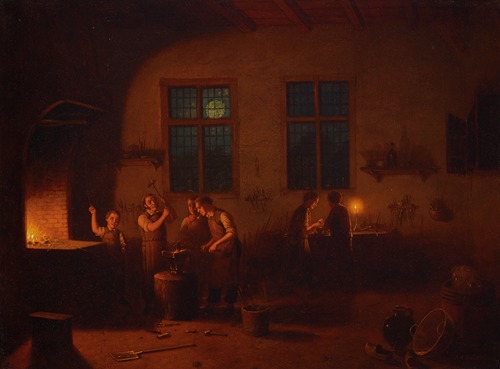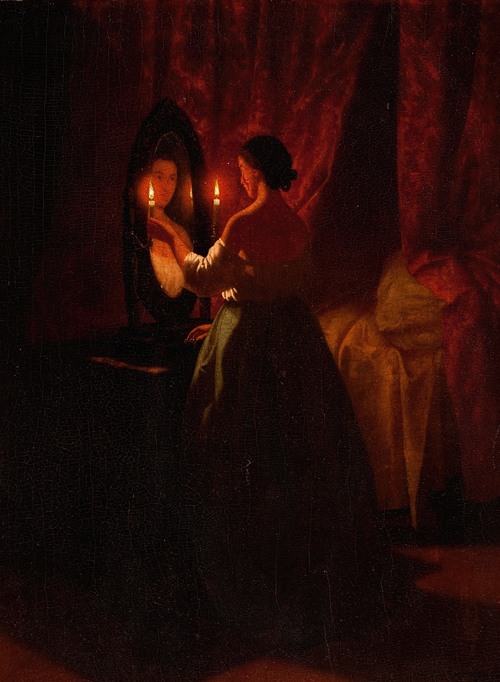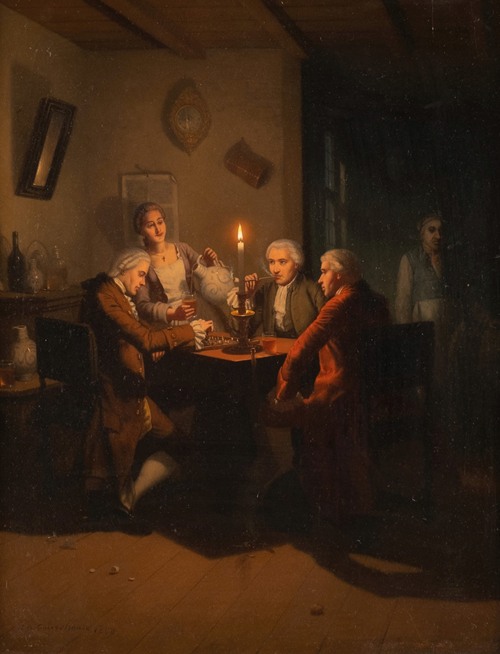
Johann Culverhouse had great success as a genre painter in late-nineteenth-century America. Born in Rotterdam, Holland, Culverhouse began working in the United States around 1849, establishing himself in New York City. There, he painted charming scenes of people at work and play -families gathered around the hearth, selling wares at market, or ice-skating at twilight. Drawing on the Dutch tradition of genre painting popularized by Johannes Vermeer, Jan Steen, and Pieter de Hooch in the seventeenth century, Culverhouse created images that captured the spirit of ordinary life. The paintings greatly appealed to collectors, and Culverhouse exhibited at the National Academy of Design, the Brooklyn Art Association, the Boston Athenaeum, and the American Art-Union. His work is currently housed in The Metropolitan Museum of Art, the Smithsonian American Art Museum, The Brooklyn Museum of Art, and the Hermitage Museum in Lausanne, Switzerland.



